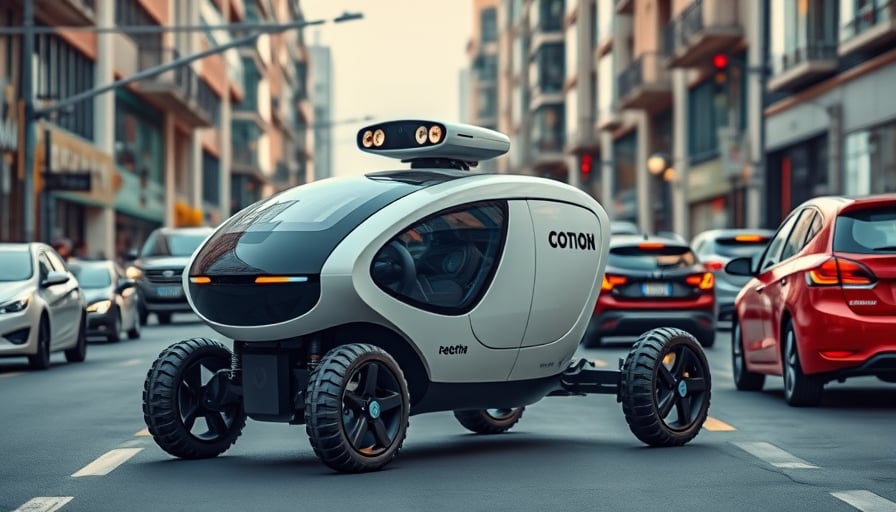Corporate News
Stellantis NV, the multinational automotive conglomerate that emerged from the 2021 merger of Fiat Chrysler Automobiles and Peugeot S.A., is currently at the center of a multifaceted corporate strategy that intertwines supply‑chain realignment, capital allocation, and emerging mobility technology. The company’s recent decisions to relocate Jeep Compass production from Canada to the United States, to commit $13 billion to U.S. expansion, and to partner with Pony.ai on autonomous robotaxi development illustrate a deliberate attempt to navigate the intersecting pressures of labor relations, regional trade dynamics, and the acceleration of the autonomous vehicle (AV) market.
Production Relocation and Labor Implications
In late March, Stellantis announced the relocation of its Jeep Compass production line from the Windsor, Ontario, plant to a newly constructed facility in the United States. The move was justified on the basis of logistics efficiency and cost savings, citing a projected reduction in supply‑chain lead times and a favorable shift in currency fluctuations. However, the decision was immediately contested by the United Auto Workers (UAW) and Unifor, the union representing the Windsor workforce. Unifor’s spokesperson labeled the relocation a breach of the existing collective‑bargaining agreement and warned of reputational damage in the Canadian market.
From a macro‑economic standpoint, the shift underscores the broader trend of North American manufacturers reassessing cross‑border production in light of post‑COVID supply‑chain disruptions and the renegotiation of the United States–Mexico–Canada Agreement (USMCA). While the U.S. investment is expected to create jobs and stimulate local economies, the Canadian automotive sector may experience a contraction in manufacturing employment, potentially prompting a reevaluation of trade policies aimed at preserving domestic automotive production.
Capital Allocation and Market Signaling
Stellantis’ $13 billion investment in U.S. operations signals a concentrated bet on the American automotive market, which remains a significant growth driver for the company’s global revenue. The capital outlay will finance the expansion of assembly capacity, research and development of next‑generation powertrains, and the enhancement of digital sales platforms. By funneling resources into the U.S., Stellantis positions itself to capitalize on the region’s robust demand for electrified and connected vehicles, while also aligning with federal incentives for green manufacturing.
This allocation has a dual effect on the company’s valuation. On one hand, the large cash commitment increases short‑term capital expenditure, exerting downward pressure on earnings per share (EPS) and, consequently, on share price. On the other hand, the anticipated operational synergies and market expansion should translate into higher long‑term free cash flow, thereby supporting a higher intrinsic value. Analysts have noted that the timing of the investment—coinciding with a period of heightened market volatility—contributed to the observed share price fluctuations.
Autonomous Vehicle Partnership: A Strategic Pivot
In a complementary move, Stellantis entered a non‑binding memorandum of understanding with Pony.ai, a Chinese‑based autonomous technology firm, to develop robotaxi services for European deployment. The partnership leverages Pony.ai’s advanced sensor fusion and perception algorithms with Stellantis’ extensive vehicle platform and regulatory experience in the EU. The planned testing phase is slated for the second half of 2025, with commercial deployment projected for the late 2020s.
From an industry perspective, this collaboration reflects the accelerating convergence of automotive and technology sectors. Autonomous mobility is increasingly seen as a revenue stream that can offset declining traditional vehicle sales, especially in saturated markets. By partnering rather than building from scratch, Stellantis reduces R&D risk and accelerates time to market. Moreover, the European focus taps into a region with stringent safety regulations and a high concentration of ride‑sharing demand, thereby positioning the company as a competitive player in the nascent robotaxi ecosystem.
Broader Economic and Competitive Context
Stellantis’ initiatives are emblematic of several cross‑cutting trends:
- Supply‑Chain Resilience – The relocation to the U.S. reduces dependency on Canadian logistics and mitigates exposure to geopolitical uncertainties.
- Electrification and Connectivity – The U.S. expansion includes investments in electrified powertrains, aligning with global decarbonization imperatives and consumer demand for low‑emission vehicles.
- Mobility as a Service (MaaS) – The robotaxi partnership signals a shift toward service‑centric business models, where vehicle ownership is complemented by subscription‑based mobility solutions.
These moves also intersect with macroeconomic variables such as labor market tightness, inflationary pressures on component costs, and the evolving landscape of automotive regulation (e.g., European emissions standards, U.S. federal safety mandates). Stellantis’ ability to balance short‑term operational costs against long‑term strategic positioning will be critical in maintaining investor confidence.
Stock Market Response and Outlook
In the wake of the production shift announcement and the $13 billion U.S. investment, Stellantis’ shares experienced a 4.8 % decline on the day of the announcement, reflecting market concerns over increased capital expenditures and potential labor disruptions. Subsequent trading saw a gradual recovery, as analysts began to weigh the long‑term benefits of the U.S. expansion against the immediate costs.
The non‑binding nature of the Pony.ai agreement, while providing strategic flexibility, also introduced an element of uncertainty that tempered bullish sentiment. Nonetheless, the partnership’s potential to unlock new revenue streams in the autonomous mobility domain has been cited as a key driver in the company’s valuation narrative.
Looking ahead, Stellantis’ strategic choices position it at the intersection of traditional automotive manufacturing and emerging mobility technologies. The company’s capacity to manage labor relations, optimize capital deployment, and navigate regulatory environments will determine its competitive advantage in a rapidly evolving industry landscape.
